Euston, we have a problem!
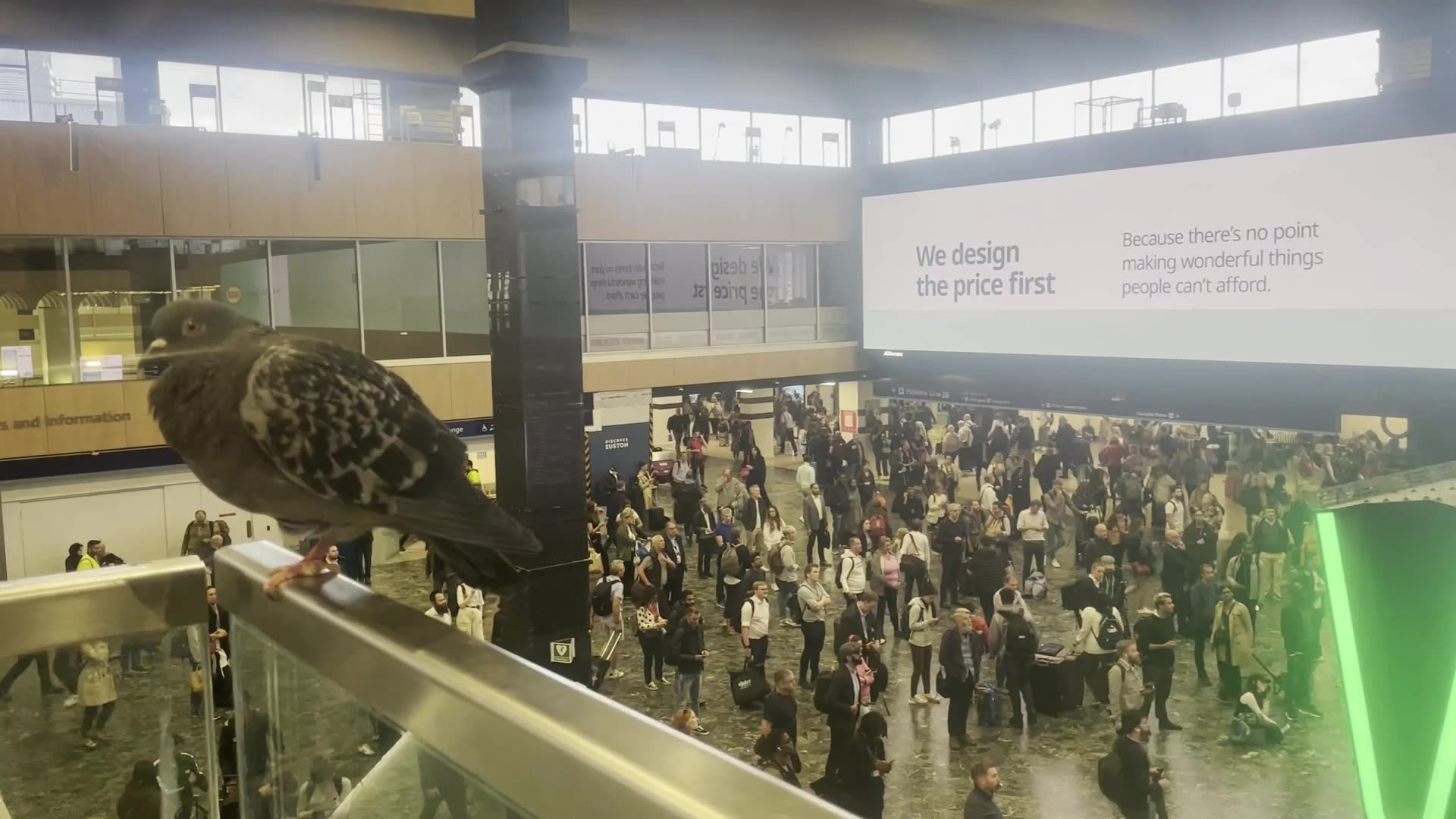
If you asked me how I picture hell, I would point to the sunless, concrete void known as Euston station.
From the moment you walk in, swathes of people are gathered, anxiously looking between their phones and the departure boards, hoping for any sort of update on what platform their delayed train will arrive on. A 60-metre screen stretches the entire length of the station and shines Ocado adverts directly into your eyeballs.
The frustrated tutting around the station could be remixed into some sort of dance track, were you able to hear it over the constant reminders that pickpockets lurk round every corner. The lighting has been scientifically engineered to induce migraines, and you find shelter in the WHSmith while you deliberate whether your platform number will be high or low. If only you had a coin to flip.
All of a sudden, the little hand telling you to wait for your train switches to ‘Platform 13’, and a tidal wave of sweaty Londoners enact the 50m sprint, rolling suitcases in toe. A group of pigeons on the upper level watch you all pile through the narrow gate to the platform. You swear you see them laughing.
As you can probably tell, I probably have some issues to work through. So, make sure you're packed and have your ticket ready for scanning - what follows is an in depth analysis of London’s least loved station.
Two’s company, three’s a crowd, and 120,000 passengers per day is really pushing it
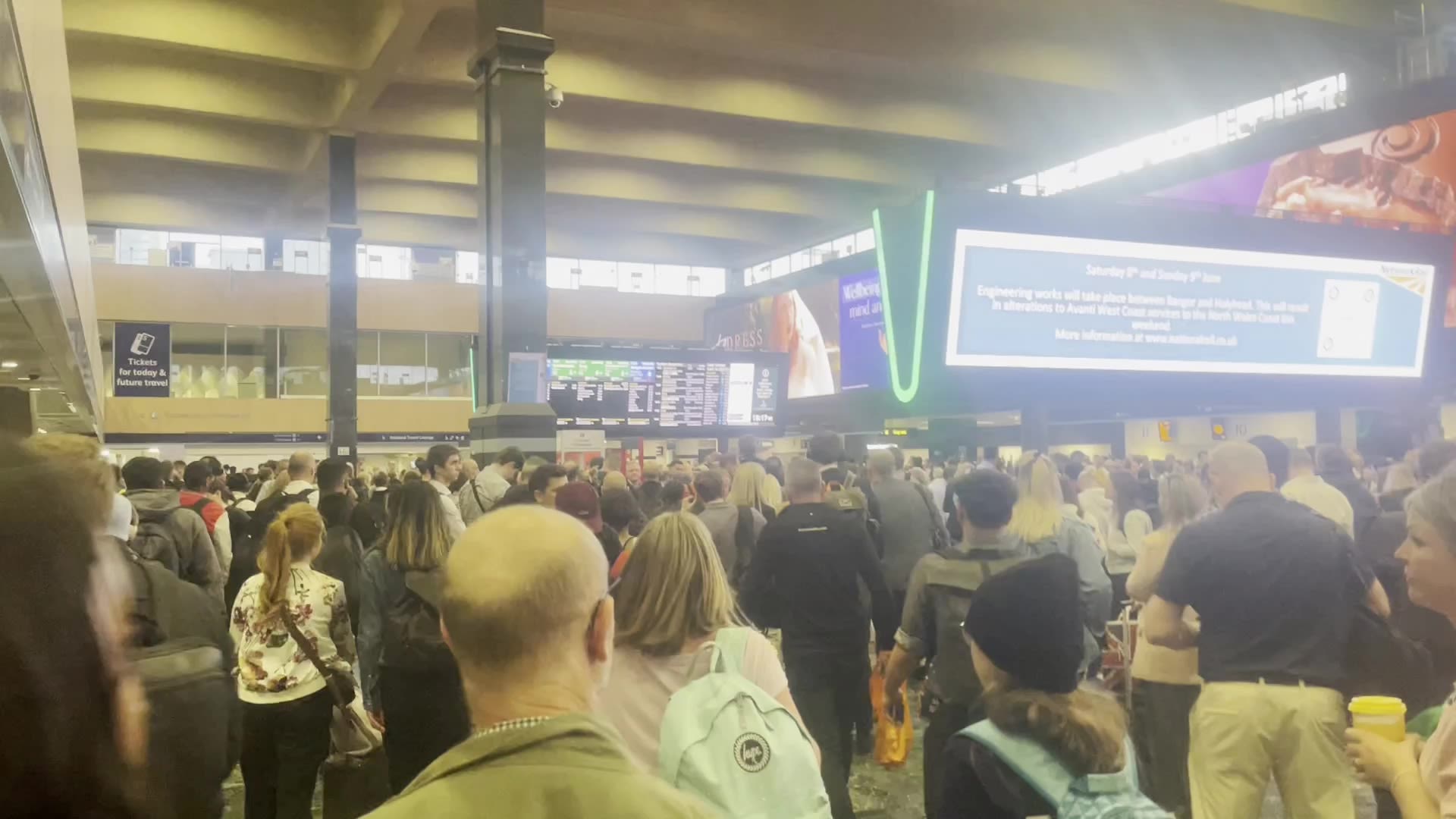
While it’s been knocking around since 1837, Euston was rebuilt into the station we know and love (cough) in 1968.
It’s difficult to picture Euston as being at the cutting edge of transport, but Queen Elizabeth, who opened the station, hailed it as the most important modernisation project of the century.
In Network Rail’s own words, “there has been little change to the overall design of Euston station” since 1968.
Last autumn, Network Rail received an improvement notice from the Office of Road and Rail (ORR), citing a failure to implement measures to prevent risks to health and safety of passengers at Euston.
During a visit to Euston, the ORR found inadequate crowd control measures, poor signage and lay out, and no recorded, risk-assessed plan for two of the worst points in the station.
The ORR also looked at three incidents on CCTV and found unacceptable levels of overcrowding and passenger surges.
In these incidents, minor injuries were reported, and the ORR found there was the potential for much worse.
Dr Taku Fujiyama, a UCL professor of transport with a background in civil engineering, says overcrowding isn’t unique to Euston: “Any mainline stations share the overcrowding issues.
“Passenger numbers have increased a lot over the last 20 years and most of the station's infrastructure is very dated.”
This is certainly true for Euston. The station was built to fit 20 million passengers a year, or around 55,000 passengers per day. In 2023, Euston catered to nearly 86,000 passengers entering or exiting the station per day, or more than 31 million per year - and this is steadily rising back to the pre-COVID levels of more than 125,000 passengers per day.
However, for Dr Fujiyama, HS2 may be the reason why Euston is a tighter squeeze than other stations. HS2 is set to have a terminus next to the existing station, but is far behind schedule and currently no more than a hole in the ground.
Dr Fujiyama speculates that the HS2 terminus may help share the load - but we’re many years away from that, and it may instead be creating a roadblock to a better Euston.
He said: “I’m sure Network Rail want to invest, but because we don’t know what’s happening with HS2, it’s very tricky.
“There have been some major improvement work at other major stations, but at Euston [because of HS2] perhaps the government is reluctant to implement those changes.”
The improvement notice given to Euston has since been lifted.
Simon Bennett, Network Rail’s West Coast South route head of stations & passenger experience, said: “Managing a popular and busy station like Euston is a daily challenge, a challenge that our dedicated cross-industry team rise to each day, always putting passengers’ well-being and safety at the forefront of their minds.
“Our team, along with the ORR, want to do more, which is why we have cleared the concourse of shops to make more
room for our passengers. We’ve fitted new state of the art information boards, both inside and outside the station. We’re also now trialling earlier boarding of services with our train operating colleagues to help reduce crowding at peak times.
"In September 2023, The ORR asked us to look at some other specific areas and our team, along with our train operating colleagues, were able to make further improvements to satisfy the ORR and close the improvement notice by December 2023.”
We apologise for any inconvenience
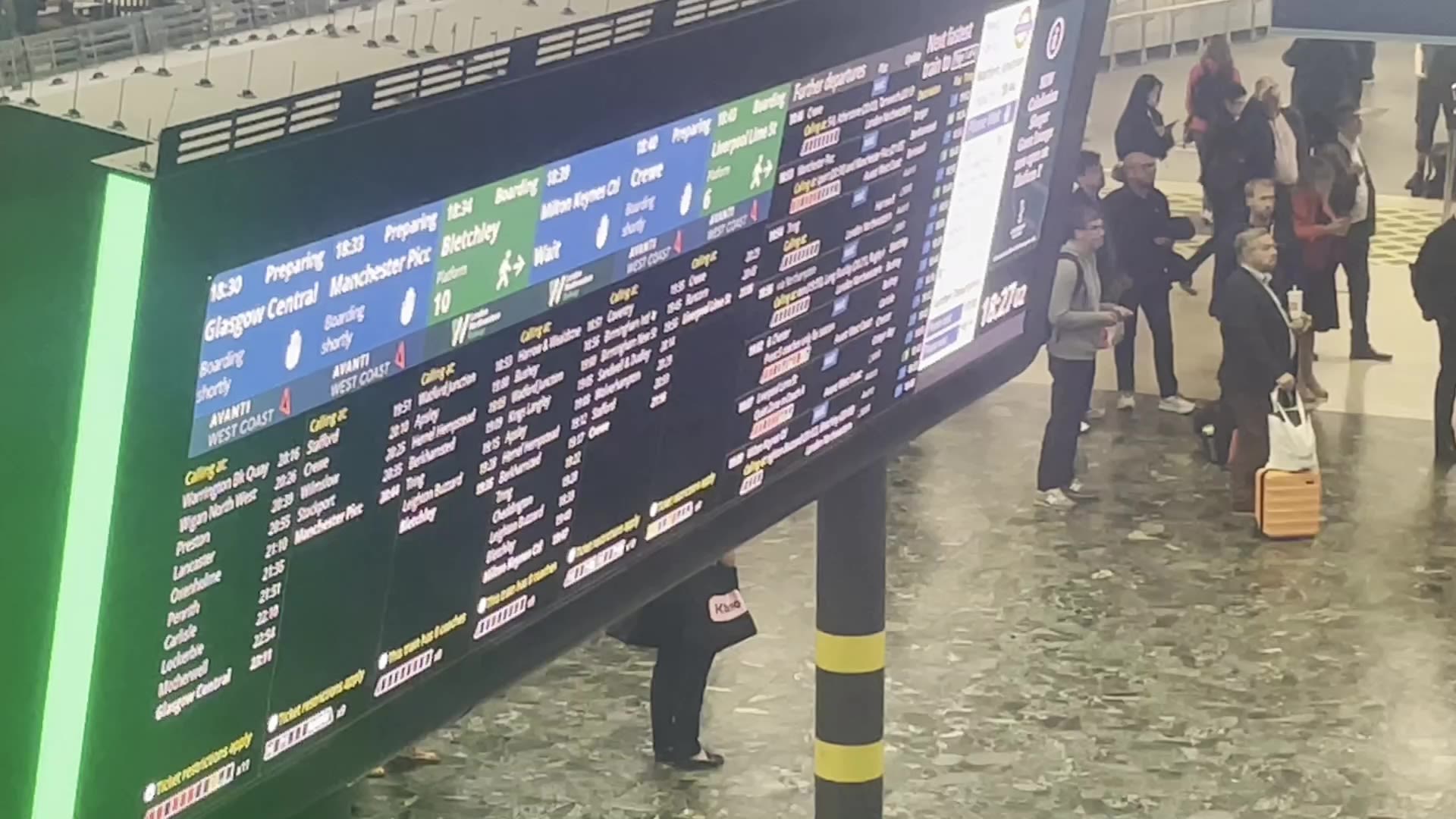
“We’re sorry, but the Avanti West Coast service to Manchester Piccadilly is delayed. We apologise for any inconvenience this has on your journey today.”
If Euston were a song, this would be its chorus.
The familiar trill of ‘Sorry your train is delayed’ begins to merge into a scene out of ‘Groundhog Day’ the longer you’re in the station.
If it feels like Euston has more trains delayed then elsewhere, you’d be right.
On Time Trains, a site which compares all train stations in the UK using open data from National Rail and Network Rail, ranks Euston 2065th out of 2628 stations as of the 15th June 2024, based on how many of its trains ran on time.
When looking at an hourly basis, it begins to dawn just how many of Euston's trains fail to run on time.
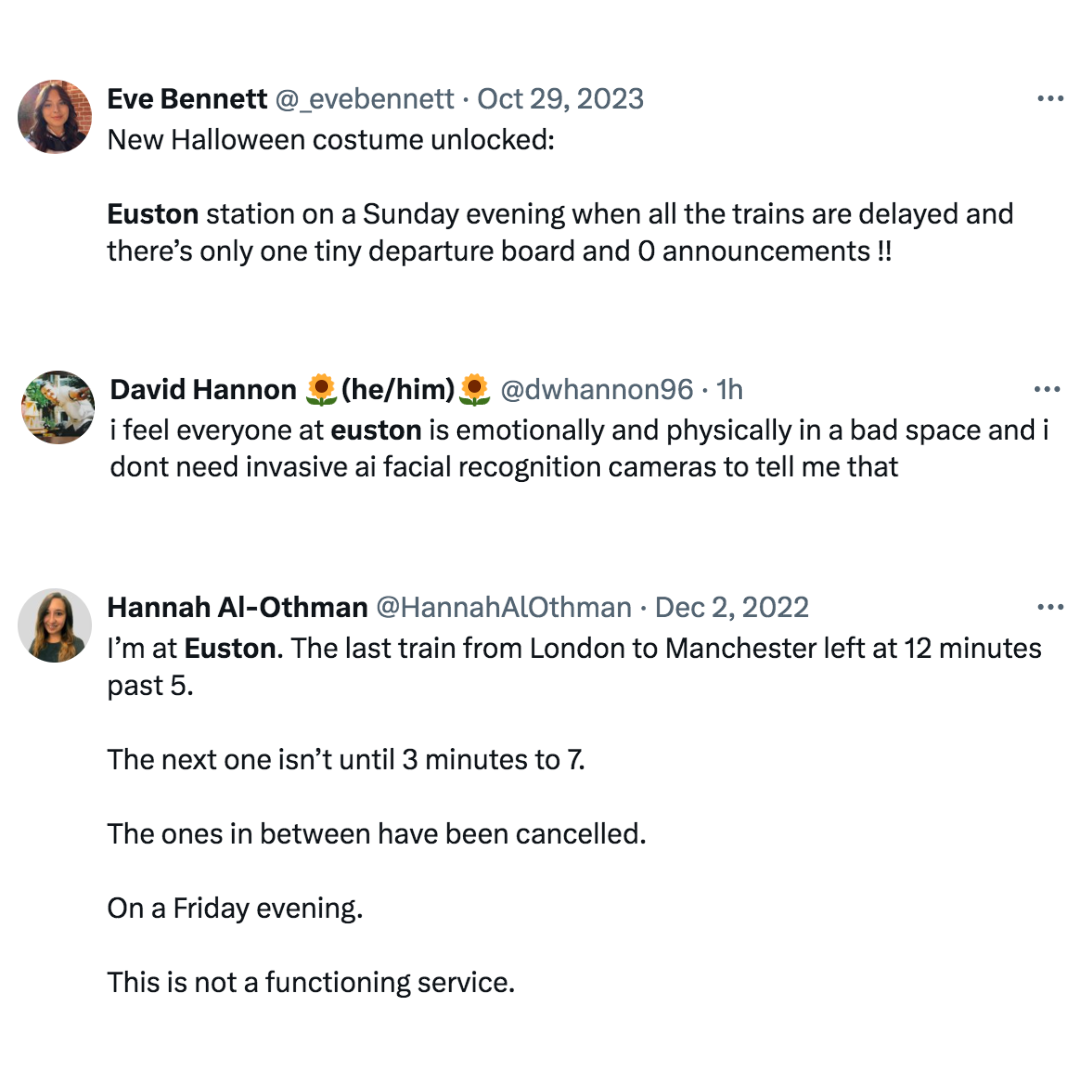
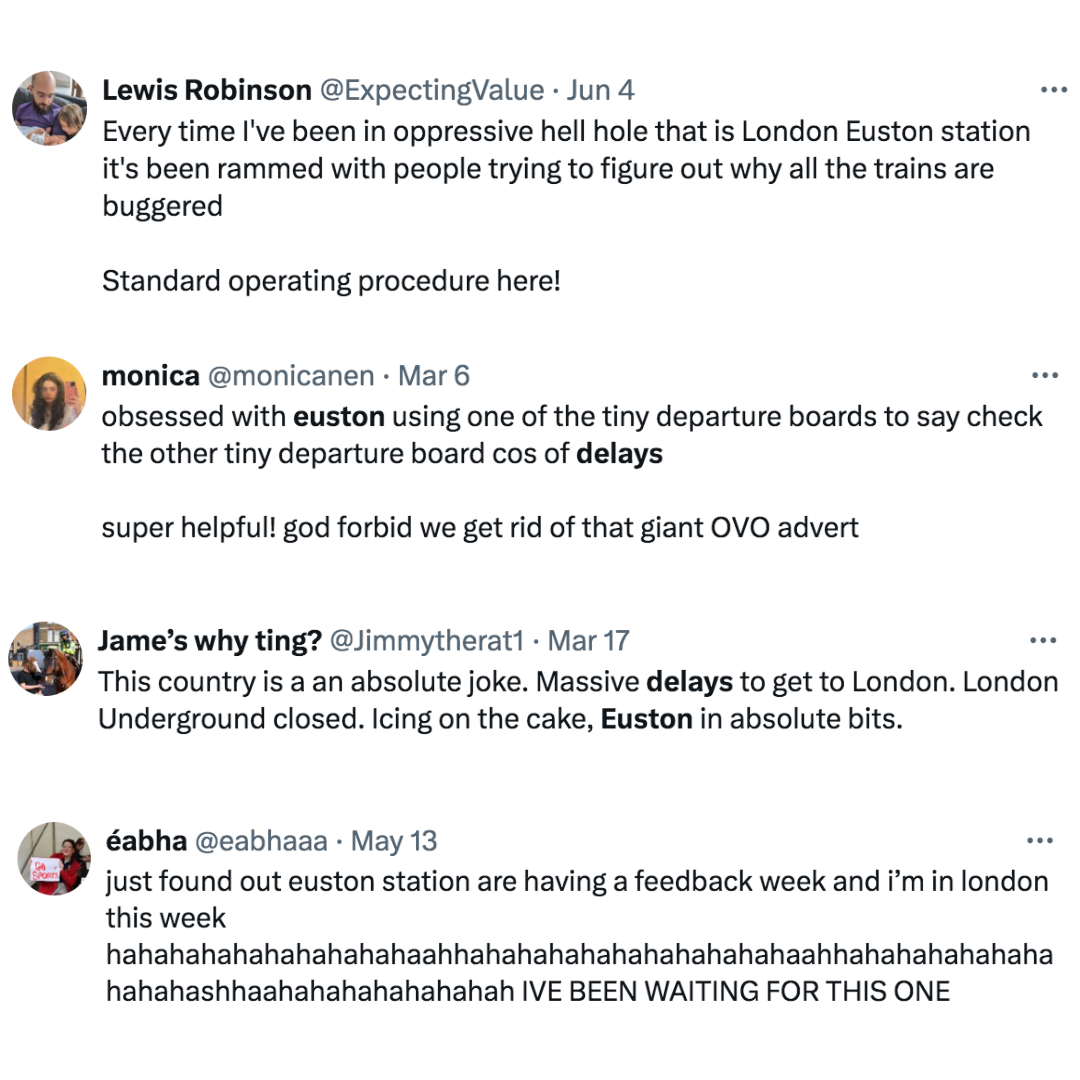
During the main bulk of the day, only between 55%-65% of trains run on time.
Looking specifically at the hours of 5pm to 8pm, the time when most would be heading home after work, trains only run on time 54%-58% of the time - and between 16%-18% are either over 10 minutes late or cancelled.
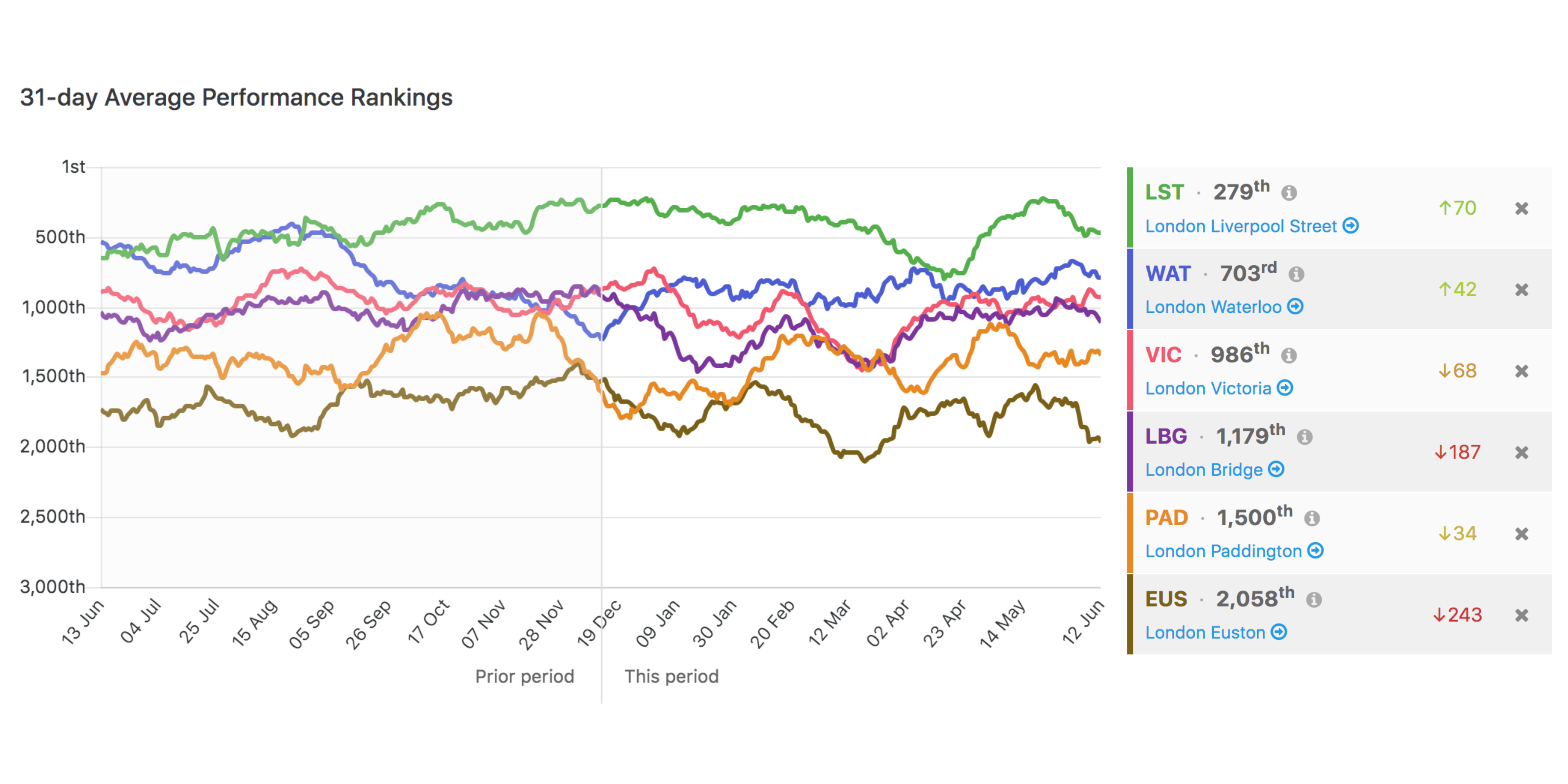
One excuse for this sorry performance is that Euston is incredibly busy. Network Rail explain on their website that the business of lines can lead to delays through knock on effect: if one thing goes wrong, everything’s affected.
According to On Time Trains, Euston is the 11th busiest station in the UK, which is nothing to sniff at.
However, as this graph demonstrates, the busiest train stations in the UK are still outperforming London Euston by a country mile. London Liverpool Street is number one busiest, followed by London Paddington, London Waterloo, London Bridge, and then London Victoria at sixth busiest. London Paddington has the lowest performance ranking of the busiest London stations, and even then it’s over 500 places ahead of Euston.
Once again, Euston's inability to manage their ever-growing passenger numbers is plain to see.
There are two other reasons why Euston may be plagued with more delays than other stations, according to Dr Fujiyama.
The first is that journeys to and from Euston can be very long, increasing the likelihood of delays: “Take London Fenchurch Street Station for example - short, simple, nice lines. Euston, on the other hand, can go as far as Scotland - it can be a nightmare.
“The second reason is issues relating to trade unions and industrial action - specifically with Avanti West Coast.”
Avanti West Coast is one of four train operators at Euston, and operates intercity trains between London, the Midlands, North West England, North Wales, and Scotland. They have been plagued by numerous issues, including unreliable and delayed trains, and extensive striking. Most recently, the advisory body Transport for the North urged the Transport Secretary to terminate Avanti’s contract due to its poor performance.
An Avanti West Coast spokesperson said: “We would like to apologise to our customers who have experienced any inconvenience over recent months when travelling to and from Euston. We continue to work with industry partners to improve punctuality and reliability across all our services.”
A mad dash
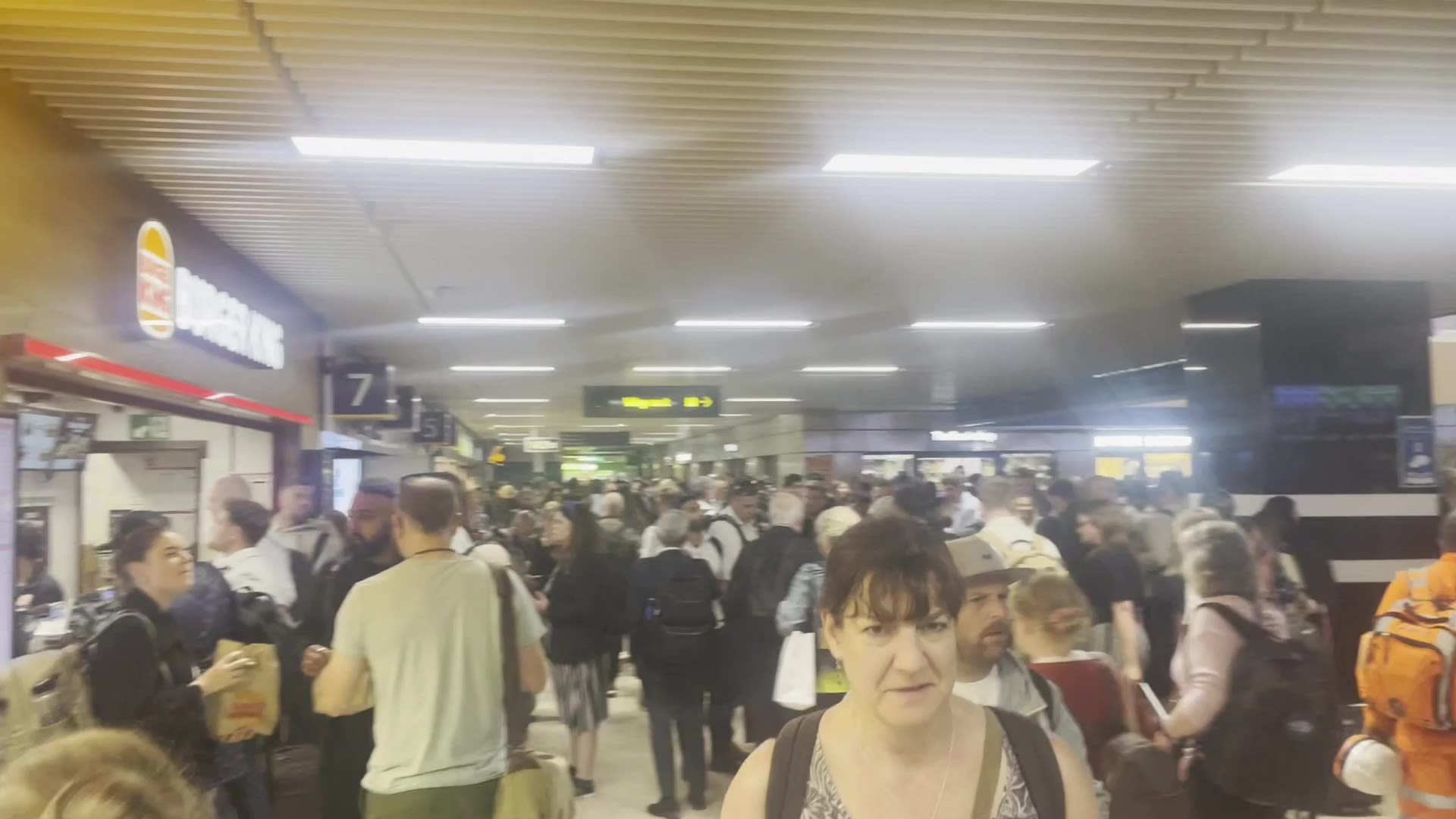
Disney fans, gather round and welcome to the new Lion King immersive experience! See the world from Simba’s eyes as he desperately avoids being trampled by a stampede of angry wildebeest.
I joke, of course. In the Lion King, Mufasa was there to rescue Simba - in Euston, you’re on your own.
Like arriving on time and getting your ticket ready for scanning, the infamous Euston run has become a recognisable feature to be expected as part of your journey.
It’s difficult to put into words the tension before the big race. There are hundreds of people all waiting for one platform to be announced, cocking their heads at every announcement as the time their train was scheduled becomes a distant memory.
It’s a recipe for disaster, and one that comes to fruition the moment the platform is called.
Dr Fujiyama explains the issue as a mixture of faulty lay out and human folly: “The platforms at Euston are slightly lower than the concourse, and they’re quite far away so people may feel they should run.
“But really, it’s more of a physical instinct. Whenever the platform number turns up, you see other people run and you think ‘I must run too!’”
Dr Fujiyama notes a couple of things Euston could do: “Some stations do what is called ‘Pre-Loading'. Charing Cross, for example, announce the platform before the train comes.”
However, he noted that barriers to Euston implementing this include a lack of staff and a lack of more modern technology that other stations may possess. He added that Euston needs to better use its space to fix the conflict between arriving and departing passengers, who are all trying to exit or enter through the same pathways.
Dr Fujiyama emphasises that these are short term solutions: “Unless more major changes are implemented, Euston’s problems are just going to get worse.”
Thank you for travelling with us today
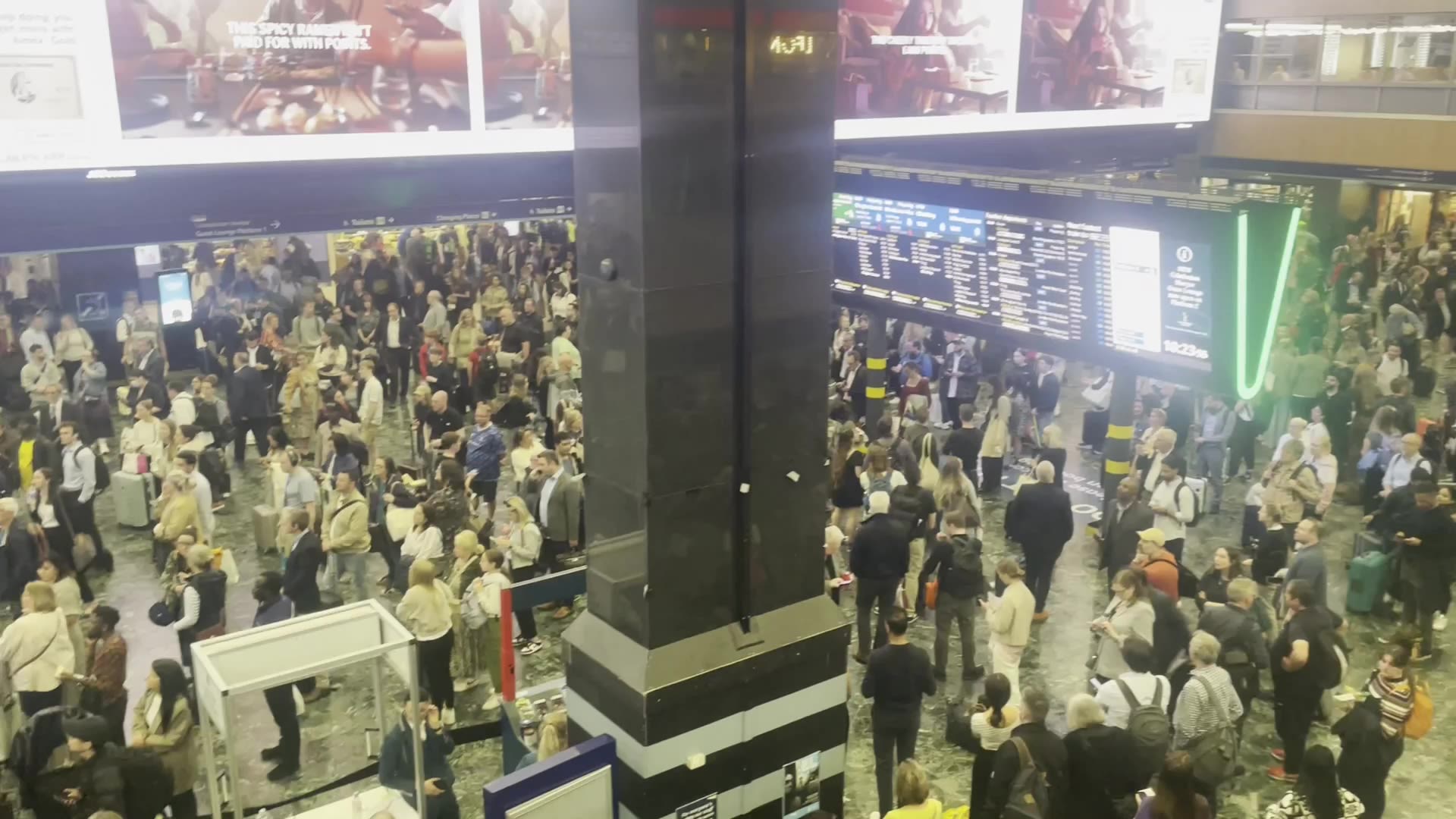
There are numerous other issues with Euston - toilet hygiene being chief amongst them - but the big three covered here present some of the biggest shortfalls and the biggest risks to passenger safety.
I could continue with this article forever, but we both have lives to live and I refuse to let Euston take any more of my remaining time on this planet.
So, I'll leave it in your hands - who do you think claims last place?
